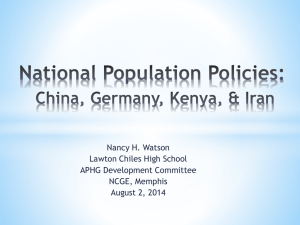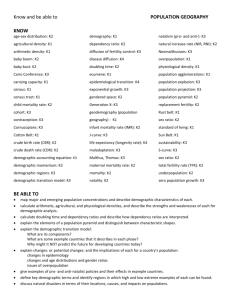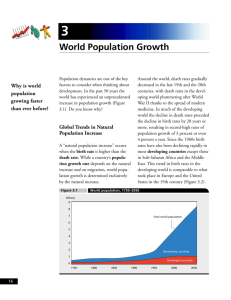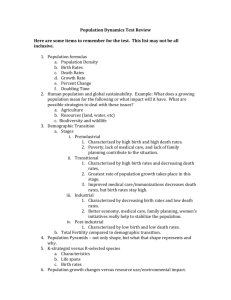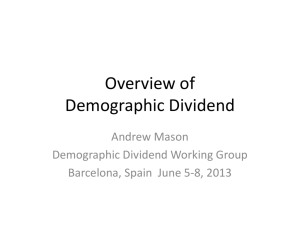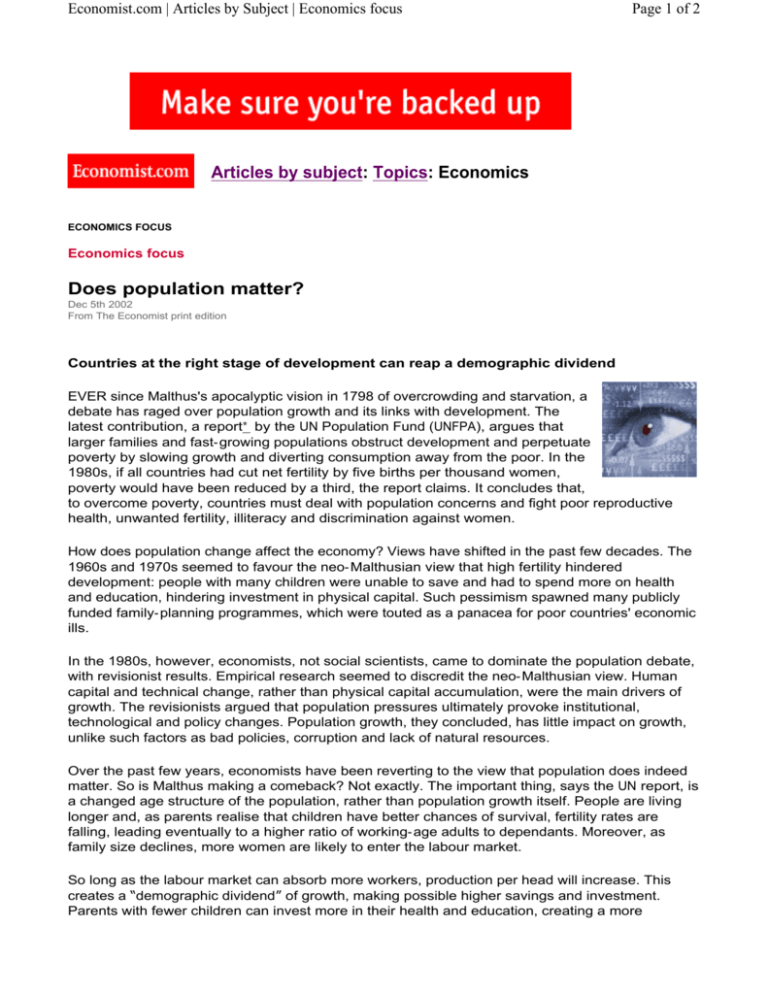
Economist.com | Articles by Subject | Economics focus
Page 1 of 2
Articles by subject: Topics: Economics
ECONOMICS FOCUS
Economics focus
Does population matter?
Dec 5th 2002
From The Economist print edition
Countries at the right stage of development can reap a demographic dividend
EVER since Malthus's apocalyptic vision in 1798 of overcrowding and starvation, a
debate has raged over population growth and its links with development. The
latest contribution, a report* by the UN Population Fund (UNFPA), argues that
larger families and fast- growing populations obstruct development and perpetuate
poverty by slowing growth and diverting consumption away from the poor. In the
1980s, if all countries had cut net fertility by five births per thousand women,
poverty would have been reduced by a third, the report claims. It concludes that,
to overcome poverty, countries must deal with population concerns and fight poor reproductive
health, unwanted fertility, illiteracy and discrimination against women.
How does population change affect the economy? Views have shifted in the past few decades. The
1960s and 1970s seemed to favour the neo- Malthusian view that high fertility hindered
development: people with many children were unable to save and had to spend more on health
and education, hindering investment in physical capital. Such pessimism spawned many publicly
funded family- planning programmes, which were touted as a panacea for poor countries' economic
ills.
In the 1980s, however, economists, not social scientists, came to dominate the population debate,
with revisionist results. Empirical research seemed to discredit the neo- Malthusian view. Human
capital and technical change, rather than physical capital accumulation, were the main drivers of
growth. The revisionists argued that population pressures ultimately provoke institutional,
technological and policy changes. Population growth, they concluded, has little impact on growth,
unlike such factors as bad policies, corruption and lack of natural resources.
Over the past few years, economists have been reverting to the view that population does indeed
matter. So is Malthus making a comeback? Not exactly. The important thing, says the UN report, is
a changed age structure of the population, rather than population growth itself. People are living
longer and, as parents realise that children have better chances of survival, fertility rates are
falling, leading eventually to a higher ratio of working- age adults to dependants. Moreover, as
family size declines, more women are likely to enter the labour market.
So long as the labour market can absorb more workers, production per head will increase. This
creates a demographic dividend of growth, making possible higher savings and investment.
Parents with fewer children can invest more in their health and education, creating a more
Economist.com | Articles by Subject | Economics focus
Page 2 of 2
productive workforce. So the source of population growth and its timing are of the essence: at
early and late stages of the demographic transition when the youngest and oldest age- groups are
growing the fastest growth suffers. The demographic dividend appears only in the middle phase.
This also means there is only one window of opportunity. Low fertility eventually leads to a rising
proportion of older people, raising the dependency ratio as the working population goes from
caring for children to caring for parents and grandparents. Nor is the demographic dividend
automatic. The right policies a flexible labour market, investment and saving incentives, provision
of high- quality health care and education are still essential to making the working- age population
more productive.
Provided that is done, a change in the population's age structure, due to a drop in mortality and
fertility rates, will promote growth. But what about poverty? Higher growth helps to reduce it but,
according to Robert Eastwood and Michael Lipton**, having fewer babies also changes the
distribution of consumption in favour of the poor. A drop in the birth rate eventually affects the
supply of workers unskilled workers in particular since fertility is usually higher among the poor
which in turn can help to increase employment and wages. Fewer babies can also mean a second
income, as mothers can then join the labour market.
Asian miracles
This demographic dividend was essential to East Asia's economic success. In 1950, the typical East
Asian woman had six children. Today she has two. As a result, between 1965 and 1990, the
working- age group rose from around 57% to over 65% of the total population, increasing four
times faster than the number of dependants. Some estimates suggest that the demographic
dividend accounted for around a third of the growth in the region's income per head in that period.
Latin America, on the other hand, has not benefited in the same way. Although demographic
conditions were favourable, income per head grew by an average of only 0.7% per year between
1975 and 1995, compared with 6.8% for East Asia. This is due to poor policies: studies suggest
that had the region been more open to trade, average growth would have more than doubled.
If these observations are correct, developing countries entering their demographic transition have
a unique chance to cash their population dividend. South Asia will reach its peak ratio of workers to
dependants between 2015 and 2025. Richer Latin American countries have completed the
transition, but poorer ones continue to lag; their peak is likely in 2020- 30. In sub- Saharan Africa,
however, only 11 countries are expected to reach that stage before 2050, and a lot still has to be
done to reduce fertility levels. The rapid rise in AIDS deaths will also frustrate changes in age
structure that would otherwise occur. And once the transition is over and the dividend pocketed,
countries will face the next big challenge: how to care for the old.
* State of the World Population 2002; People, Poverty and Possibilities: Making Development Work for the Poor , UNFPA
**In Population Matters. Demographic Change, Economic Growth and Poverty in the Developing World , edited by Nancy Birdsall,
Allen C.Kelley and Steven W. Sinding, Oxford University Press, 2001.
Copyright © 2007 The Economist Newspaper and The Economist Group. All rights reserved.




